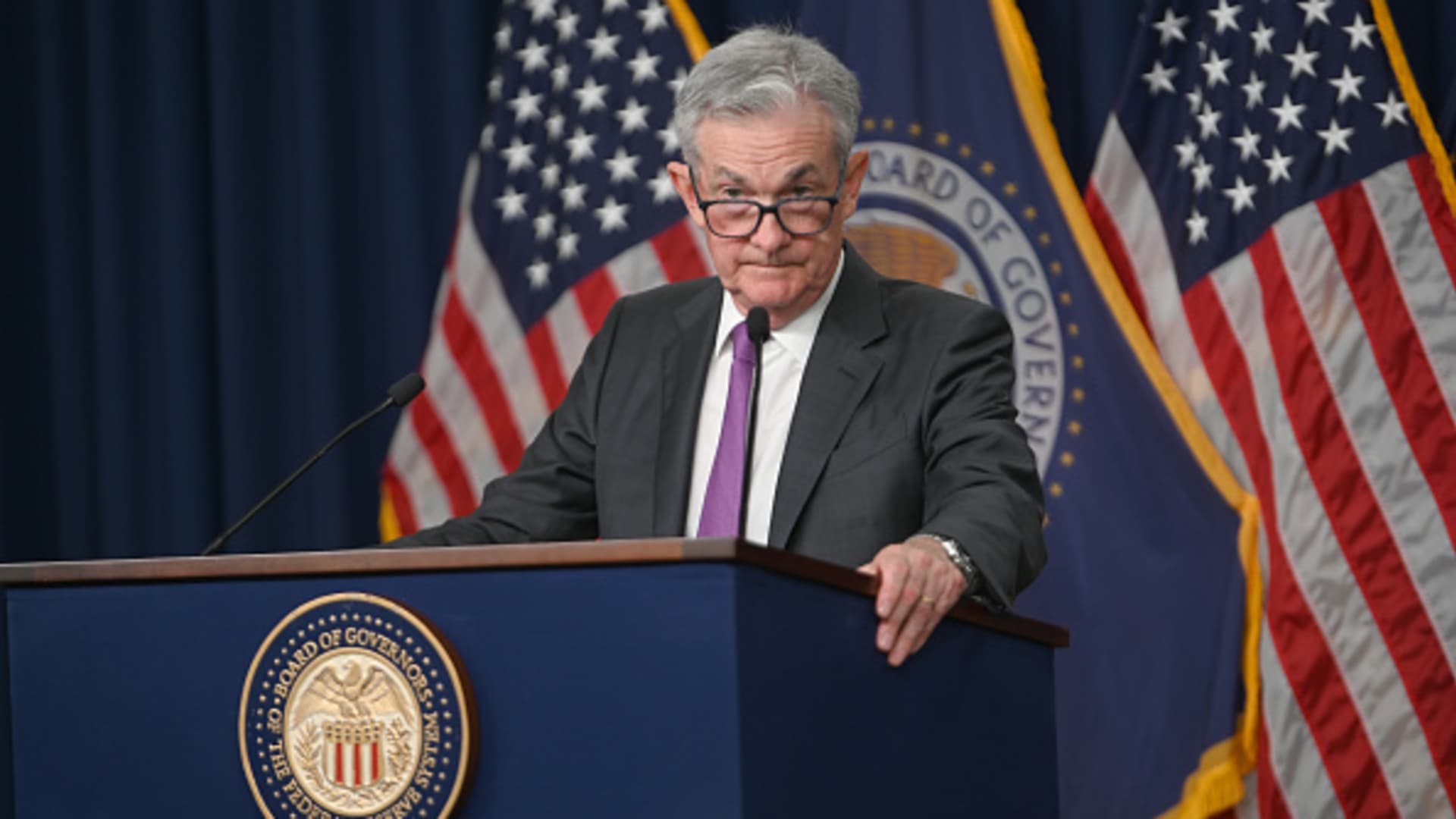U.S. Federal Reserve Chairman Jerome Powell speaks during a news conference after a Federal Open Market Committee meeting on July 26, 2023 in Washington, DC.
Chen Mengtong | China News Service | Getty Images
This report is from today’s CNBC Daily Open, our new, international markets newsletter. CNBC Daily Open brings investors up to speed on everything they need to know, no matter where they are. Like what you see? You can subscribe here.
What you need to know today
Losing streak
U.S. markets fell for a second straight day and Treasury yields rose as traders digested hawkish minutes from the Federal Reserve. Asia-Pacific markets followed Wall Street lower Thursday. Australia’s S&P/ASX 200 lost 0.53% as data showed the country’s seasonally adjusted unemployment rate climbing to 3.7% in July, higher than economists expected.
China’s 5% target
China’s Premier Li Qiang said the country will work to achieve its economic growth target of around 5%, according to an official readout. At a meeting of China’s State Council, Li called for boosting domestic demand and consumption. Such stimulus will be welcome — analysts are thinking it’s increasingly likely China will miss its target this year.
Export troubles in Japan
China’s sluggish economy is affecting the rest of Asia. Japan’s exports in July fell 0.3% year on year, their first monthly decline since February 2021. Weaker demand from China caused exports to the country to plunge 13.4%, the eighth consecutive monthly decline. Meanwhile, Japan’s imports slumped 13.5% as domestic demand faltered as well.
[PRO] European companies at risk
Indeed, the weakness in China isn’t contained to the region. European companies with close ties to the world’s second-largest economy face risks too. CNBC Pro analyzed sales data and came up with a list of companies that rely significantly on China for their venue.
The bottom line
The fight against inflation isn’t over. And there’s a risk interest rates have to go higher. That’s the key takeaway from minutes of the Fed’s July meeting.
Here are the exact words from the meeting summary: “With inflation still well above the Committee’s longer-run goal and the labor market remaining tight, most participants continued to see significant upside risks to inflation, which could require further tightening of monetary policy.”
That wasn’t something markets wanted to hear. Investors think there’s a 60% chance rates will be at current levels at the end of the year, according to the CME FedWatch Tool. But they might have to revise their bets soon, especially since U.S. economic data is coming in hotter than expected.
“Recent third-quarter GDP estimates, coupled with fresh retail sales data, suggest a much more robust underpinning to the economy, certainly not what the Fed wants to see as they navigate the so-called ‘last mile’ towards achieving price stability,” said Quincy Krosby, chief global strategist for LPL Financial.
Longer-term U.S. Treasury yields — which are typically more sensitive to interest rate changes — rose in response to the minutes. The 10-year yield traded around 5 basis points higher at 4.258%, its highest closing rate in more than 15 years. The 2-year yield added nearly 4 basis points to hit 4.967%.
It wasn’t a pretty picture in the stock market as well. All three major indexes fell for their second consecutive session. The S&P 500 declined 0.76%, the Dow Jones Industrial Average dropped 0.52% and the Nasdaq Composite slumped 1.15%. Both the S&P and Nasdaq closed below their 50-day moving average.
But there might be a silver lining to the sell-off. “Valuations are becoming less and less extreme,” said Sam Stovall, chief investment strategist at CFRA Research.
That’s a good opportunity for investors to jump in on Big Tech stocks such as Nvidia and Tesla — provided the expectation that earnings have bottomed in the second quarter proves true. But given the hawkish slant of the Fed minutes, it might be a steeper trough to climb out of than previously thought.

